UCL injuries, common among athletes, involve tears in the ulnar collateral ligament, often due to repetitive stress. Rehabilitation exercises are crucial for recovery and preventing re-injury.
1.1. Understanding UCL Tears
A UCL tear refers to a partial or complete rupture of the ulnar collateral ligament, crucial for elbow stability. Common in athletes, especially throwers, it results from repetitive stress or acute injury. Symptoms include medial elbow pain, decreased throwing velocity, and instability. Diagnosis involves physical exams, like the valgus stress test, and imaging (MRI/ultrasound). Early recognition is vital to prevent further damage. Understanding the tear’s severity guides treatment, whether nonoperative rehabilitation or surgical intervention. Proper diagnosis ensures tailored approaches for optimal recovery and return to activity. Accurate assessment is key to avoiding prolonged downtime and ensuring effective care.
1.2. Importance of Rehabilitation Exercises
Rehabilitation exercises are essential for restoring strength, mobility, and function after a UCL injury. They prevent further damage and promote healing without surgery. Early exercises focus on maintaining range of motion and strength, progressing to sport-specific movements. Consistency is key to rebuilding ligament integrity and ensuring a safe return to activity. Rehabilitation also reduces the risk of re-injury and enhances overall joint stability. A well-structured exercise program tailored to the individual’s needs is critical for achieving optimal recovery and resuming athletic performance effectively.
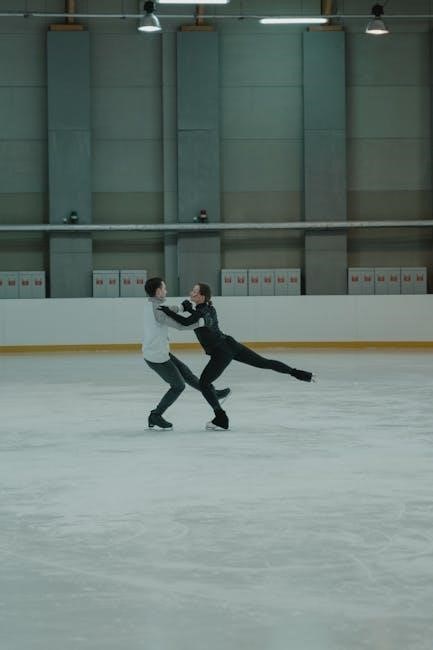
Foundational UCL Exercises
Foundational UCL exercises focus on restoring basic movement and strength, such as thumb active exercises and wrist stretches, to promote early recovery and joint stability.
2.1. Thumb Active Exercises
Thumb active exercises are essential for restoring mobility and strength in the thumb and hand after a UCL injury. These exercises include thumb IP blocking, where the thumb is braced below the tip joint and bent, repeating 8-10 times, 3-4 times daily. Another key exercise is thumb extension and flexion, where the thumb is moved outward and then back into the palm. These movements help improve joint flexibility and reduce stiffness. Regular practice of these exercises promotes functional recovery and prepares the hand for more advanced rehabilitation activities. Consistency is crucial to achieve optimal results and prevent further injury.
2.2. Wrist Flexion and Extension Stretch
Wrist flexion and extension stretches are vital for improving flexibility and reducing stiffness in the wrist and forearm, which are critical for UCL recovery. To perform, stand upright and extend one arm in front, palm down. Use the other hand to gently pull the wrist back, stretching the forearm. Hold for 20-30 seconds and repeat 3-4 times on each side. This exercise helps restore range of motion and prepares the wrist for more intensive rehabilitation activities. Regular practice ensures optimal joint mobility and supports the overall rehabilitation process, making it easier to progress to strength-building exercises later on.
2.3. Elbow Flexion and Extension Isometrics
Elbow flexion and extension isometrics strengthen the muscles around the elbow without joint movement, reducing stress on the UCL. Sit with the elbow bent at 90 degrees and apply resistance with the other hand. Hold for 5-10 seconds, repeat 10-15 times, 3-4 times daily. For extension, extend the arm straight and apply resistance. These exercises maintain muscle strength and joint stability, crucial during early rehabilitation. They allow progression to dynamic movements later, supporting overall recovery and preventing re-injury. Consistency is key to restoring function and preparing for more advanced exercises in the rehabilitation program.
Intermediate UCL Exercises
Intermediate exercises focus on improving strength and stability. TheraBand CLX resistance, shoulder external rotations, and dumbbell exercises target key muscles, enhancing recovery and functionality.
3.1. TheraBand CLX Resistance Exercises
TheraBand CLX resistance exercises are essential for strengthening the arm and shoulder. Secure the CLX in a door and grip it with your hand, bending your elbow at 90 degrees. Perform controlled movements, shifting weight side to side while maintaining shoulder stability. This exercise targets the forearm, biceps, and triceps, improving flexibility and strength. Progress resistance gradually and focus on proper form to avoid strain. These exercises enhance functional movement and are vital for intermediate rehabilitation, bridging the gap between foundational and advanced training.
3.2. Shoulder External Rotation with Elastic Tubing
Shoulder external rotation with elastic tubing enhances rotator cuff strength and stability. Anchor the tubing at shoulder height and hold the ends. Keeping elbows at 90 degrees, rotate shoulders outward, stretching the tubing. Focus on smooth, controlled movements to avoid injury. This exercise is crucial for improving joint mobility and preventing re-injury. Perform 3 sets of 10-12 reps, gradually increasing resistance. It helps restore proper throwing mechanics and is a key component in intermediate UCL rehabilitation, promoting functional strength and stability.
3.3. Biceps and Triceps Dumbbell Exercises
Biceps and triceps exercises with dumbbells are essential for strengthening the elbow flexors and extensors, crucial for UCL rehabilitation; Hold a dumbbell with both hands and perform controlled elbow flexion and extension. Start with light weights and progress gradually. These exercises enhance forearm stability and reduce strain on the UCL. Perform 3 sets of 10-12 repetitions daily to improve muscular endurance and joint mobility. Proper form is vital to avoid overloading the ligament. This exercise helps restore strength needed for activities like throwing and supports the overall recovery process, making it a key component of intermediate UCL rehabilitation.
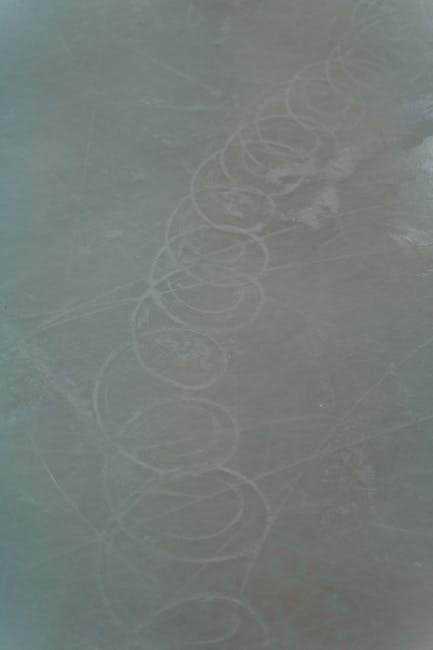
Advanced UCL Exercises
Advanced exercises focus on dynamic movements, including medicine ball chest passes and body blade resistance, to enhance strength, stability, and functional movement in the elbow and shoulder.
4.1. Medicine Ball Chest Pass
The medicine ball chest pass is an advanced exercise targeting the UCL and surrounding muscles. Using a 6-8lb medicine ball, stand facing a wall or partner. Hold the ball at chest level with both hands. Explosively push the ball forward, extending both arms fully and following through. Focus on quick, controlled movements to engage the elbow and shoulder stabilizers. This exercise mimics throwing motions, improving strength and endurance. Perform 3 sets of 10-12 repetitions. For variation, use a trampoline or wall for rebound catches, emphasizing full extension and proper follow-through to restore functional strength and throwing mechanics.
4.2. Body Blade ER/IR and Push/Pull Exercises
The Body Blade ER/IR and push/pull exercises are advanced movements designed to strengthen the UCL and surrounding stabilizers. Hold the Body Blade with both hands, elbows at 90 degrees, and engage the blade by pushing and pulling it outward against resistance. Focus on controlled, smooth motions to activate the shoulder and elbow muscles. Perform external rotation (ER) and internal rotation (IR) exercises, followed by push/pull movements to enhance strength and endurance. This exercise improves dynamic stability and functional strength, essential for throwing athletes. Aim for 3 sets of 10-12 repetitions, gradually increasing resistance as strength improves.
4;3. Supine Dumbbell Press
Lie on your back with knees bent and feet flat on the floor. Hold a dumbbell over your chest with both hands, elbows slightly bent. Press the dumbbell upward, extending your elbows fully while maintaining control. Lower the weight back to the starting position with a slow, controlled movement. This exercise strengthens the shoulders, triceps, and upper body muscles, which are essential for UCL stability. Perform 3 sets of 8-10 repetitions, gradually increasing the weight as strength improves. Focus on proper form to avoid strain on the elbow joint. This exercise is ideal for advanced stages of UCL rehabilitation.

Rehabilitation Protocols
Rehabilitation protocols for UCL injuries include nonoperative guidelines, criterion-based progression, and the use of hinged elbow braces to protect healing tissues while restoring range of motion and strength.
5.1. Nonoperative UCL Tear Rehabilitation Guidelines
Nonoperative rehabilitation for UCL tears focuses on protecting the healing ligament while restoring range of motion and strength. A hinged elbow brace is typically used for the first 6 weeks to limit stress on the UCL. Patients begin with low-load, long-duration stretches into elbow extension and gradual progression of motion. Strengthening exercises for the forearm, wrist, and scapular muscles are introduced early, avoiding valgus stress. Criteria-based progression ensures patients advance only when they meet specific milestones, such as achieving full range of motion or demonstrating adequate strength. This approach aims to avoid surgery while effectively restoring function and preventing further injury.
5.2. Criterion-Based Progression Program
A criterion-based progression program for UCL rehabilitation ensures patients advance through phases based on specific, measurable goals rather than a fixed timeline. The program begins with immobilization and gradual restoration of range of motion, followed by isotonic exercises for the wrist, elbow, and shoulder. Strengthening exercises, such as wrist curls and elbow isometrics, are introduced once pain and inflammation subside. Progression to resistance exercises, like TheraBand CLX and dumbbell work, occurs only when the patient demonstrates sufficient strength and control. Each phase is designed to protect the healing ligament while rebuilding functional strength and mobility, ensuring a safe return to activity.
5.3. Role of Hinged Elbow Brace
The hinged elbow brace plays a critical role in the early stages of UCL rehabilitation by protecting the injured ligament and preventing excessive stress. It is typically worn for the first 6 weeks post-injury or surgery, limiting elbow motion to a controlled range of 30° to 110°. This restriction allows the UCL to heal without disruption while enabling low-load, long-duration stretches and gentle strengthening exercises. The brace also provides stability, reducing pain and inflammation during the initial recovery phase. Gradual adjustments to the brace’s range are made as healing progresses, ensuring a balanced approach to restoring mobility and strength.
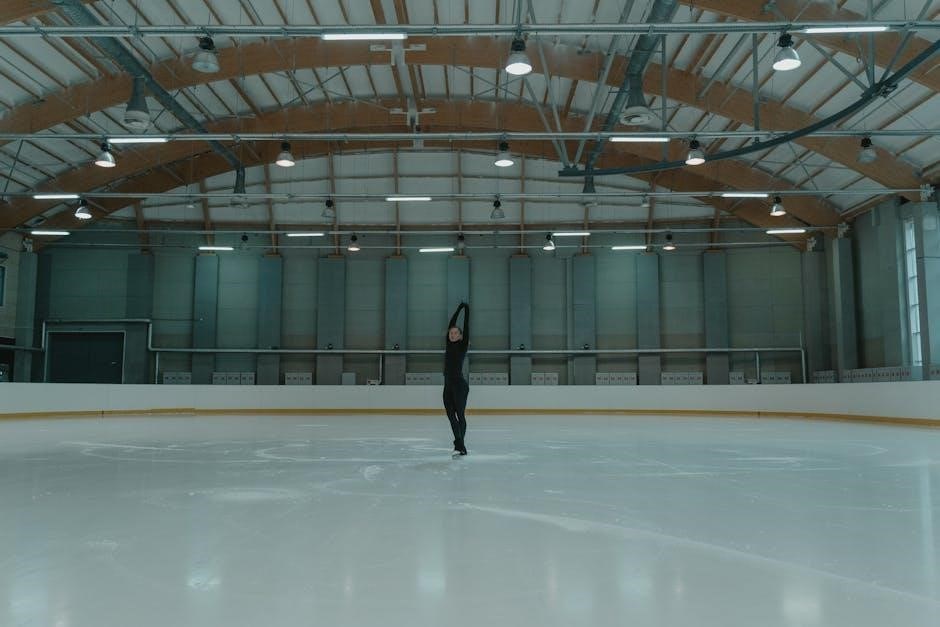
Exercise Progression
Exercise progression for UCL injuries involves transitioning from early closed kinetic chain exercises to advanced movements, focusing on scapular strengthening and gradual increases in motion and resistance.
6.1. Early Closed Kinetic Chain Exercises
Early closed kinetic chain exercises, such as wall push-ups and upright wall slides, are essential for UCL rehabilitation. These exercises promote joint stability and strength without putting excessive strain on the elbow. By maintaining control throughout the movement, patients can enhance scapular function and overall upper limb mechanics. Progression involves increasing resistance and range of motion gradually, ensuring proper form to prevent re-injury. These exercises lay the foundation for more advanced movements, fostering a stable environment for healing and restoring functional mobility.
6.2. Scapular Strengthening Techniques
Scapular strengthening is vital for UCL rehabilitation, as it enhances shoulder stability and reduces strain on the elbow. Exercises like supine serratus anterior punches and wall slides target the scapular muscles. These movements improve posture and promote proper shoulder mechanics. By focusing on controlled movements, patients can strengthen the serratus anterior and trapezius muscles, which are critical for scapular stabilization. Progressing these exercises with resistance bands or light weights can further enhance strength. Proper form and gradual progression are essential to avoid overloading the shoulder and to ensure effective rehabilitation of the UCL.
6.3. Gradual Increase in Motion
A gradual increase in motion is essential for UCL rehabilitation to restore functional range without overloading the healing ligament. Early stages focus on controlled elbow flexion and extension, progressing from 0° to 135° in 5-10° increments. Low-load, long-duration stretches into elbow extension are performed to improve flexibility while maintaining ligament protection. Strengthening exercises are introduced alongside mobility work to ensure proper joint mechanics. This phased approach minimizes the risk of re-injury and promotes a stable, functional elbow. Proper progression ensures the elbow gains strength and mobility in a controlled manner, reducing the likelihood of future complications.
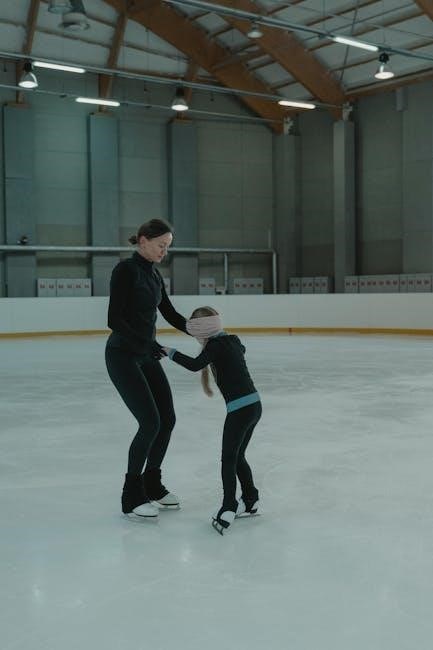
Specific Exercise Techniques
Specific exercises target the elbow, shoulder, and forearm to enhance strength and mobility. Techniques include wrist flexion stretches, isometric elbow holds, and controlled throwing motions to restore function safely.
7.1. Standing Wrist Flexion Stretch
Start in a standing position with one arm extended in front at shoulder height. Use your other hand to gently pull your hand back, stretching your wrist upward. Hold for 15-20 seconds, then return to the starting position. Repeat 3 times daily for 7-10 days. This stretch improves wrist flexibility and reduces stiffness, essential for UCL recovery.
Key points: Maintain proper posture, breathe naturally, and avoid bouncing. Perform 10 repetitions per session, focusing on controlled movements to enhance joint mobility and strength without causing strain.
7.2. Seated Isometric Elbow Flexion
Sit comfortably with your arm at your side, elbow bent at 90 degrees, and palm facing upwards. Engage your biceps by pulling your forearm toward your shoulder without moving your elbow. Hold for 10 seconds, then relax. Perform 3 sets of 10 repetitions daily. This exercise strengthens the elbow flexors and improves joint stability, crucial for UCL recovery. Focus on controlled movements and avoid using momentum. Proper breathing and maintaining posture are essential for maximizing benefits and preventing strain.
7.3. Reverse Throw Exercise
Stand facing a wall with your injured arm at shoulder height, palm facing backward. Slowly extend your arm, mimicking a throwing motion, and then return to the starting position. Perform 3 sets of 10 repetitions. This exercise improves elbow extension and strengthens the triceps and surrounding muscles. Maintain control throughout the movement to avoid strain. It is essential to use minimal resistance and focus on proper technique to promote healing and restore function. This exercise is typically introduced in later stages of rehabilitation to enhance dynamic stability and prepare for return to activity.

Preventing UCL Re-Injury
Preventing UCL re-injury involves strengthening forearm and wrist muscles, improving elbow and shoulder mobility, and ensuring proper throwing mechanics to reduce stress on the ligament.
8.1. Strengthening the Forearm and Wrist
Strengthening the forearm and wrist is essential for preventing UCL re-injury. Exercises like wrist curls, extensions, pronation, and supination target the muscles that support the elbow. Using resistance bands or light dumbbells, these isotonic exercises improve grip strength and forearm endurance. Perform 3 sets of 10-15 repetitions daily. Focus on controlled movements to avoid strain. Incorporate palm-up and palm-down positions for pronation and supination exercises. Gradually increase resistance as strength improves. Strengthening these areas enhances joint stability and reduces stress on the UCL, promoting long-term durability and preventing future injuries.
8.2. Stretching for Elbow and Shoulder Mobility
Stretching is crucial for maintaining elbow and shoulder mobility after a UCL injury. Focus on low-load, long-duration stretches to improve flexibility without causing strain. Standing wrist flexion stretches and elbow extension stretches are effective. Perform 3 sets daily, holding each stretch for 20-30 seconds. Incorporate shoulder external rotation stretches using resistance bands to enhance mobility. Avoid valgus stress to protect the UCL. Gradually increase the range of motion as healing progresses. Regular stretching reduces stiffness and promotes proper joint alignment, essential for preventing re-injury and restoring functional movement. Consistency in stretching routines supports long-term recovery and overall elbow stability.
8.3. Proper Throwing Mechanics
Proper throwing mechanics are essential for preventing UCL re-injury. Focus on a controlled throwing motion, emphasizing weight transfer and body positioning. Avoid excessive elbow stress by using a smooth, full-body movement. Mimic throwing motions gradually, starting with light resistance and short distances. Incorporate exercises like reverse throws to strengthen the surrounding muscles. Gradually increase intensity and velocity as strength improves. Strengthening programs should address shoulder, elbow, and core stability to support proper mechanics. Regular practice with a focus on technique reduces strain on the UCL, promoting long-term durability and performance. Professional guidance ensures safe progression and minimizes injury risk.
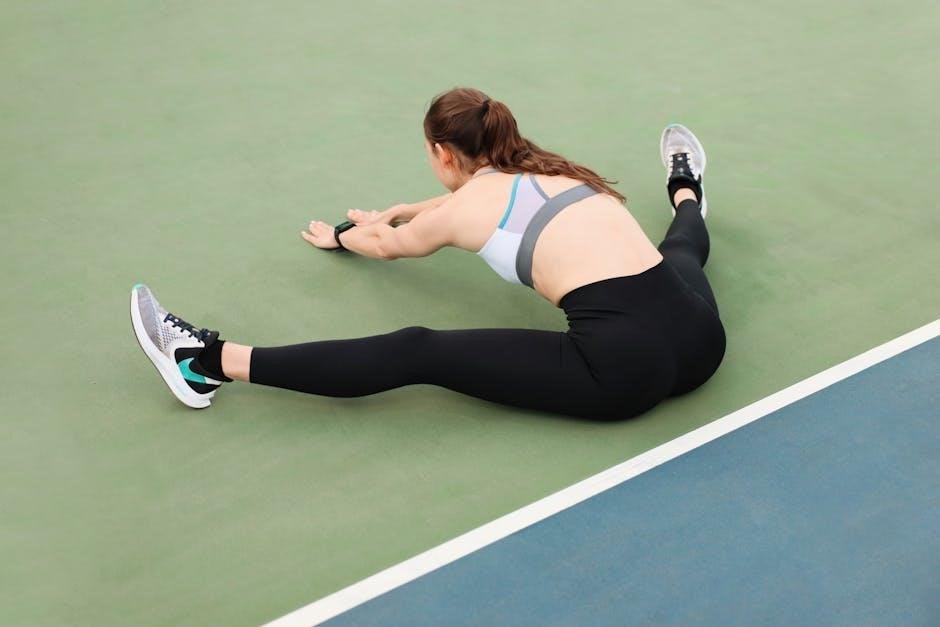
The Role of Isotonic Exercises
Isotonic exercises strengthen muscles through dynamic movements, improving elbow and shoulder function. They include wrist curls, extensions, and pronation/supination, enhancing joint stability and promoting recovery.
9.1. Wrist Curls and Extensions
Wrist curls and extensions are essential isotonic exercises for strengthening the forearm muscles, which support the elbow joint. Using dumbbells or resistance bands, these exercises target flexion and extension movements. Sit comfortably with your forearm on your thigh, palm up for curls and down for extensions. Lift the weight slowly, then lower it back. Perform 3 sets of 10-12 repetitions daily. These exercises enhance muscle endurance and improve joint stability, crucial for UCL recovery and preventing re-injury. Proper form ensures effectiveness and minimizes strain on the healing ligament.
9.2. Pronation and Supination Exercises
Pronation and supination exercises strengthen the forearm muscles responsible for rotating the wrist. Using a light dumbbell or resistance band, hold the weight with your palm down (pronation) and rotate upwards until your palm faces up (supination). Perform 3 sets of 10-12 repetitions daily. These exercises improve forearm strength and flexibility, essential for elbow stability and UCL recovery. Maintain controlled movements to avoid strain. Incorporating these exercises into your routine enhances overall joint function and supports long-term injury prevention. Consistency is key for optimal results and a robust rehabilitation outcome.
9.3. Deltoid and Supraspinatus Strengthening
Deltoid and supraspinatus strengthening is vital for improving shoulder stability and overall upper limb function. Perform lateral raises with dumbbells or resistance bands to target the deltoids. For the supraspinatus, use overhead shoulder presses or lateral raises with minimal weight. Start with 3 sets of 8-10 repetitions, gradually increasing resistance. These exercises enhance shoulder mobility and strength, reducing strain on the UCL. Proper form is essential to avoid injury. Incorporating these exercises into your routine supports long-term shoulder health and complements UCL rehabilitation. Consistency ensures optimal results and helps prevent future injuries.
A well-structured UCL exercise program enhances recovery, prevents re-injury, and restores functionality. Consistency and adherence to prescribed exercises are crucial for achieving optimal outcomes and long-term shoulder health.
10.1. Summary of UCL Exercise Program
The UCL exercise program is a structured approach to rehabilitation, focusing on progressive exercises to restore strength, mobility, and function. It begins with foundational exercises like thumb active movements and wrist stretches, advancing to intermediate resistance training with tools like TheraBand and elastic tubing. Advanced exercises incorporate medicine ball throws and dumbbell presses to enhance strength and endurance. The program emphasizes consistency, gradual progression, and proper technique to prevent re-injury. By addressing the entire kinetic chain, including the shoulder and core, the program aims to restore full functionality and readiness for return to activity, ensuring long-term recovery and performance.
10.2. Importance of Consistency and Compliance
Consistency and compliance are vital for successful UCL rehabilitation. Regular performance of prescribed exercises ensures gradual tissue healing and strength restoration. Missing sessions can hinder progress and prolong recovery. Compliance with physician and therapist instructions helps avoid overloading the injured ligament, preventing setbacks. Adhering to the structured program fosters a safe environment for the UCL to heal, reducing re-injury risk. Patience and dedication are key, as full recovery requires time and effort. Consistent adherence to the program promotes optimal outcomes, enabling a return to normal activities and sports effectively.
